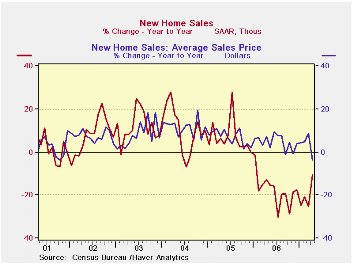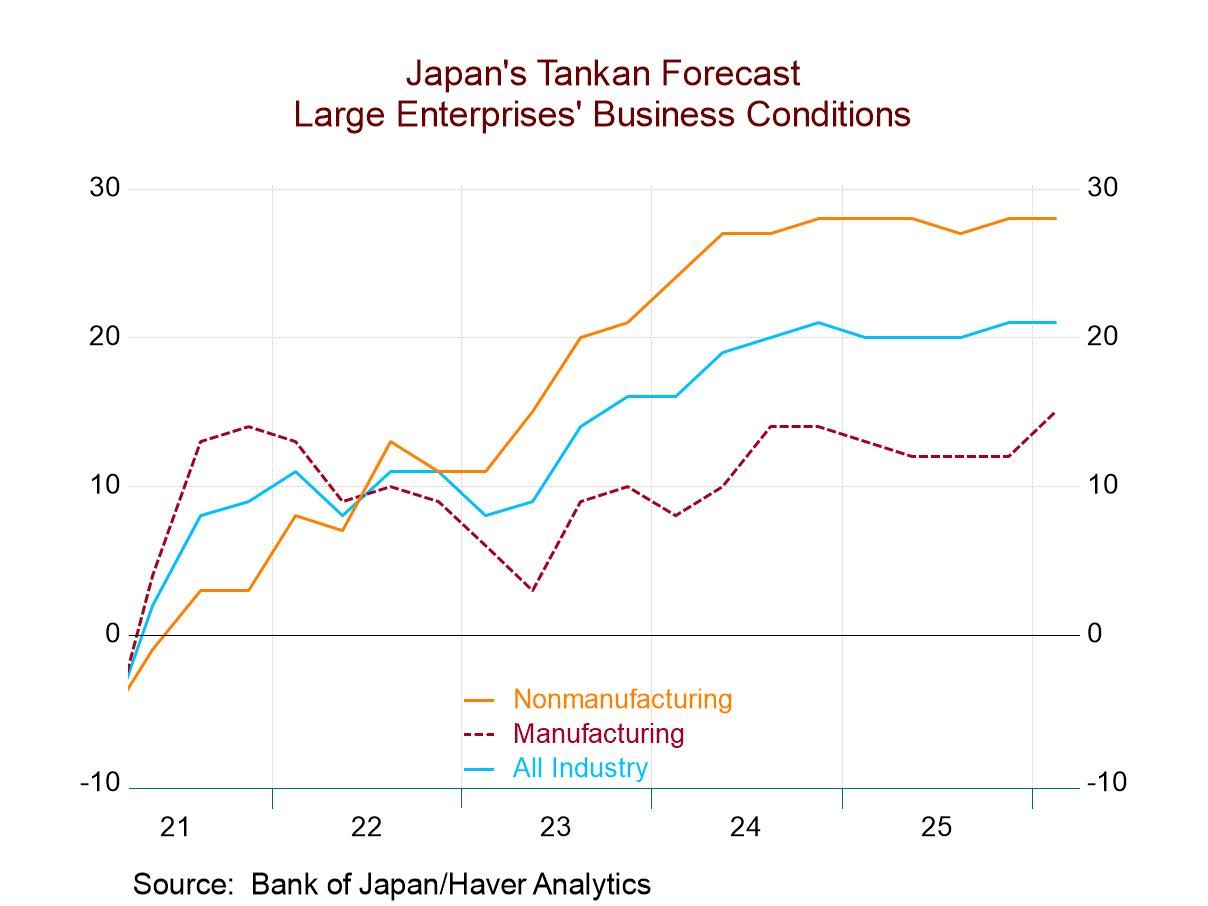 Global| May 24 2007
Global| May 24 2007New Home Sales Jump and Prices Dive. Bad News as Good?
Summary
New home sales were revised lower in March but still managed to jump sharply to post a much stronger selling rate in April than had been expected. The jump of 16.2% m/m reverses out the weakening trend in housing. Sales are still down [...]

New home sales were revised lower in March but still managed to jump sharply to post a much stronger selling rate in April than had been expected. The jump of 16.2% m/m reverses out the weakening trend in housing. Sales are still down year/year but only by 10.6%. Conditions are still spotty. While Toll Brothers reported somewhat improved results, that home builder is still not comfortable enough with prospects to give earnings guidance. However, it did say that it had seen glimmerings of strength- not just an abatement of weakness.
The new home sales report shows the small and volatile Northeast up by 43% Y/Y and the largest region, the South, off by just 3.4% Y/Y. The West and Midwest are off by Y/Y values in the range of 25% to 30%.
Cleary the rise in sales is the big news in this report. But a rival bit of news is the drop in prices. Last month average and median pries were up Y/Y. But Median prices have swung from +7.9% Y/Y in March to -10.9% Y/Y in April. What’s that line from Frank’s song? Riding high in March, shot down in April …hmmm not quite the verse, but those are the facts. Average prices have switched from a March gain of 8.7% Y/Y to a drop of 3.6% Y/Y in April. The relatively larger drop in median prices speaks of more weakness at the lower priced end of the market and may have something to do with sub-prime problems. Cleary builders have been cutting prices and just as clearly, the strategy has been working.
If we look at trends in average new home prices around the time of the last recession, we see that builder capitulation on prices was the catalyst in that recession for spurring house prices back up and for ending the weakness in the sector as recovery took hold in the economy at large. House prices then snapped back up into a positive growth range quickly as the economy transitioned from recession to growth. House prices could be performing this same function again. The low prices jump start demand and get some inventory off homebuilder’s hands giving the market a push and creating some buzz at the same time. With continued growth in the rest of the economy housing is able to move ahead and dig itself out of the slump. It looks like a good story to me…Oh, and they all live happily ever after, too.
| Momentum: Annualized Rates Of Change | Prices | ||||||
| As of: | Total | Northeast | Midwest | South | West | Median | Average |
| Month-to-month percent change | |||||||
| Apr.07 | 16.2% | 3.8% | -4.0% | 27.8% | 8.5% | -11.1% | -7.9% |
| Mar.07 | -1.4% | 77.8% | 1.6% | -8.9% | -2.9% | 3.0% | 0.7% |
| Feb.07 | -3.8% | -27.4% | -25.9% | -2.0% | 21.2% | -1.7% | 2.5% |
| Annualized Rates | |||||||
| Total | Northeast | Midwest | South | West | Median | Average | |
| 3-Mo | 40.9% | 135.5% | -110.8% | 56.1% | 110.6% | -34.2% | -18.3% |
| 6-Mo | 6.1% | 225.6% | -24.8% | 12.9% | -25.7% | -16.3% | -5.0% |
| 1-Yr | -10.6% | 43.1% | -28.1% | -3.4% | -25.4% | -10.9% | -3.6% |
Robert Brusca
AuthorMore in Author Profile »Robert A. Brusca is Chief Economist of Fact and Opinion Economics, a consulting firm he founded in Manhattan. He has been an economist on Wall Street for over 25 years. He has visited central banking and large institutional clients in over 30 countries in his career as an economist. Mr. Brusca was a Divisional Research Chief at the Federal Reserve Bank of NY (Chief of the International Financial markets Division), a Fed Watcher at Irving Trust and Chief Economist at Nikko Securities International. He is widely quoted and appears in various media. Mr. Brusca holds an MA and Ph.D. in economics from Michigan State University and a BA in Economics from the University of Michigan. His research pursues his strong interests in non aligned policy economics as well as international economics. FAO Economics’ research targets investors to assist them in making better investment decisions in stocks, bonds and in a variety of international assets. The company does not manage money and has no conflicts in giving economic advice.






